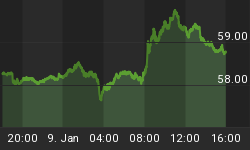Optimism About Monetary Stimulus

If you are relatively new to the markets, it is important that you take the time to understand how the Fed impacts asset prices. Clients often scratch their heads trying to understand how to match up tepid economic growth and high unemployment with financial markets that seem to keep going up and up. The Fed continues to inject billions of dollars of freshly printed money into the global financial system as shown in this QE flow diagram. A familiar reason was cited by the press for Thursday's advance in the equity markets. From Reuters:
U.S. stocks resumed their move higher on Thursday as optimism about monetary stimulus for the foreseeable future helped to offset mixed news on the economy and earnings. PulteGroup Inc (PHM.N) was among the day's biggest gainers, after the homebuilder reported results and said a slowdown in new home orders would be "short-lived." Its shares jumped 7.3 percent to $17.90, while shares of D.R. Horton Inc (DHI.N) rose 3.2 percent to $20.09 and Beazer Homes Inc (BZH.N) added 1.8 percent to $19.47.
ETF Leadership This Week
Have investors bought into the "QE until October 2014" scenario we covered Wednesday? If we review the flow of investment dollars this week, the answer is "yes". The table below shows ETFs that (a) have an established bullish weekly (longer-term) demand profile relative to the S&P 500, and (b) have seen greater buying pressure than the S&P 500 (SPY) this week (shorter-term). ETF leadership tells us investors (a) are concerned about a weak dollar (foreign stocks popular), (b) have some confidence in future economic outcomes (cyclical and small caps), and (c) are more concerned about future inflation relative to future deflation (metals, such as XME).

Noteworthy defensive ETFs that were unable to earn their way into the table above: consumer staples (XLP), Treasuries (TLT), aggregate bond (AGG), and inverse stock (SH). The defensive ETFs are not in the table above because investors still believe stocks are the place to be.
What Can We Learn From The Fear Index?
The VIX is often referred to as the Fear Index since it is typically used to hedge against future stock market volatility. Volatility is the nice way of saying "stocks are going down". If you are a believer in contrarian investing, then could the big bearish VIX bet described below be twisted into a bullish signal? From Bloomberg:

An investor paid $6.7 million for a trade that will pay off if the Chicago Board Options Exchange Volatility Index more than doubles by February. The trader today bought 160,000 bullish contracts on the VIX expiring in February with a strike price of 24, while selling the same number of February 29 calls in a strategy known as a call spread, according to New York-based Trade Alert LLC. The trade profits if the volatility gauge rises above 24.42 from the current level around 13, data compiled by Bloomberg show. It has a maximum payoff if the VIX jumps 115 percent to 29. "This is probably an investor with a portfolio of stocks who is using the VIX to hedge against an increase in market volatility," Frederic Ruffy, a Chicago-based senior options strategist at Trade Alert, said in a phone interview. "The focus is on the February options, so it expresses concern over what will happen during the next three months, which coincides with the next deadlines on the government budget."
Taking the VIX (VXX) analysis to action this week, the table below shows the VIX made its intraweek high of $14.21 midweek. Thursday's session saw the VIX drop by 1.94%. Also noteworthy was the intraday high which showed waning fear relative to Monday, Tuesday, and Wednesday (blue arrow).

Portfolio Allocation Implications - Friday Will Make Or Break Week
While many were jumping onto the "a major top is right around the corner" bandwagon, the visible evidence from the battle between bullish economic conviction and bearish economic fear prompted us to postulate last weekend could stocks surprise on the upside? After Wednesday's ugly session, you may be surprised to learn that as of Thursday's close the S&P 500 is up 7.57 points this week; and the Dow has tacked on 109 points. Since our market model relies heavily on the weekly demand balance between economic confidence and economic fear, we respect a 7 point S&P 500 gain could be wiped out Friday. Therefore, we sat tight Thursday and will see how the big picture looks heading into the weekend. For now, the supply and demand balance on the ETF front continues to point to many of our holdings as being prudent risk-reward options: broad U.S. (VTI), technology (QQQ), small cap (IWM), foreign developed (EFA), Europe (FEZ), financials (XLF) and emerging markets (EEM). We will hold our current positions until the observable evidence shifts in a meaningful way.















